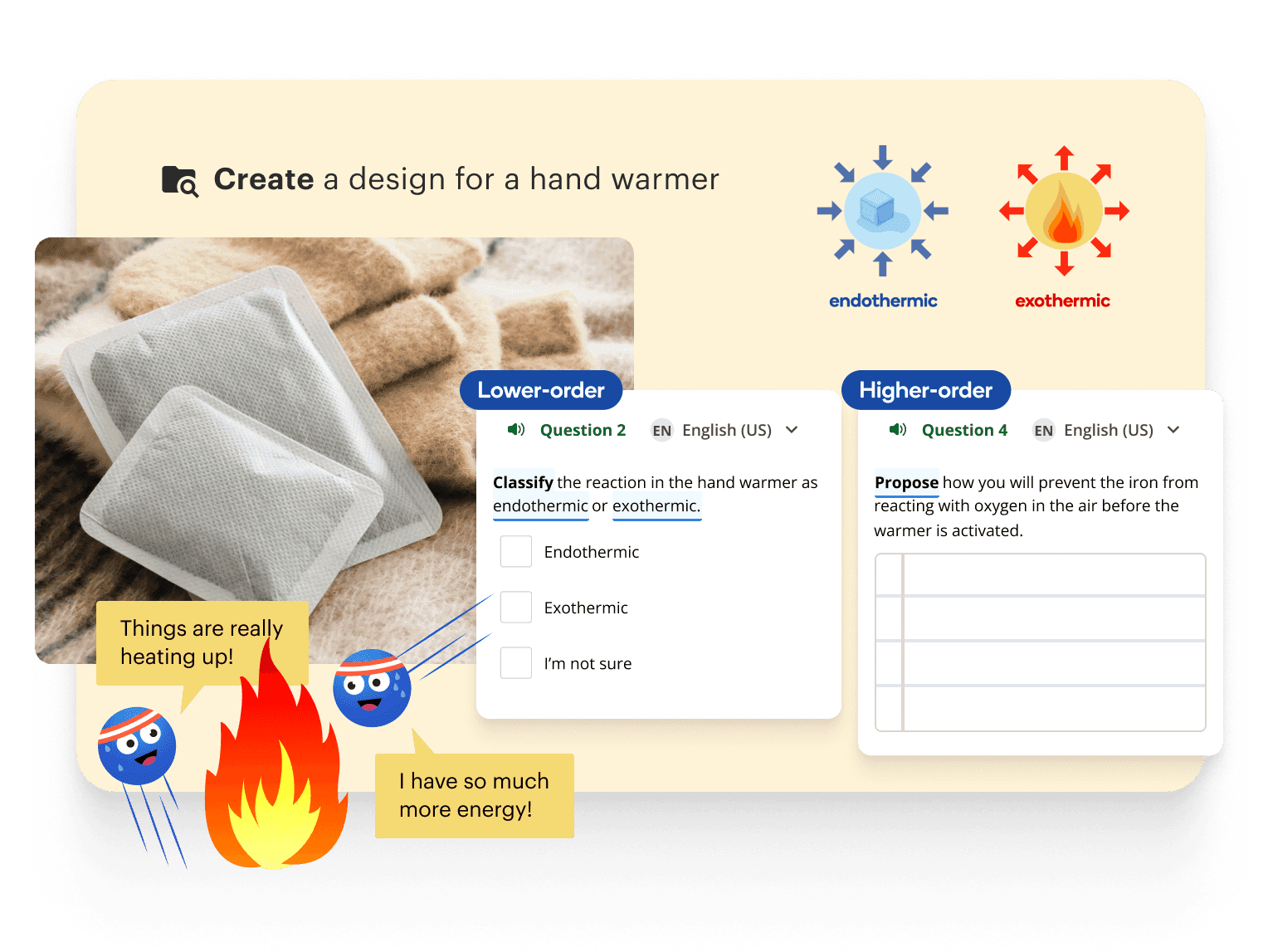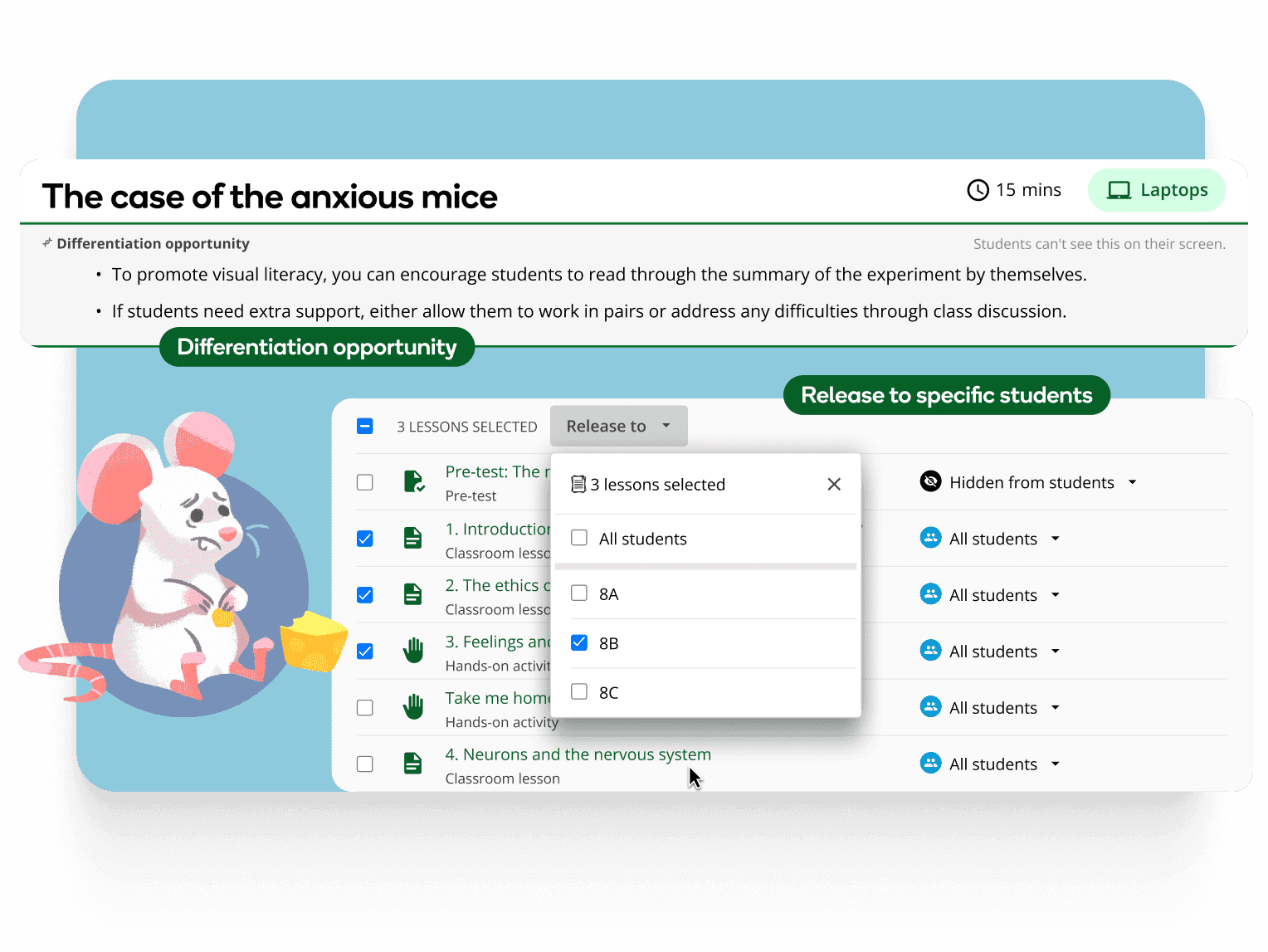Differentiated instruction
Differentiated instruction is about challenging every student at an appropriate level. Teachers support the progress of all students by adjusting the content they learn, the process used to understand it, and the product that demonstrates their understanding. Formative assessment helps teachers select appropriate intervention strategies.
Initially developed by
Carol Ann Tomlinson, University of Virginia, USA (1990s).
Effectiveness
Asriadi et al.’s 2023 study‘Does differentiated instruction affect learning outcome? Systematic review and meta-anlysis’found that differentiated instruction had a significant impact over traditional learning methods, with a Standardized Mean Difference of 1.02 in the science classroom.
Further reading
The Differentiated Classroom, by Carol Ann Tomlinson.
Where you'll find it in Stile
Complete customisability allows teachers to tailor lessons to students' specific needs. Frequent, automatically marked formative assessment tasks allow teachers to track student progress and identify needs.
Examples within Stile
Meeting students where they are
Lessons are scaffolded from lower- to higher-order thinking, creating multiple entry points for learners based on their ability.
Design a hand warmer lesson
in the Physical and Chemical Change unit
in the Physical and Chemical Change unit

Tailored lessons released to select student groups
Any Stile lesson can be copied, then edited to suit student needs: reducing complexity, simplifying language, adding personal points of interest and so on. Modified lessons can be released to select groups of students.
Introduction: How can your gut influence your mood? lesson
in the Nervous System unit
in the Nervous System unit

Opportunities for extension
Every lesson ends with either a singular Challenge Question or an entire “Going Further” section where students have an opportunity to extend themselves beyond the lesson's learning goal.
Moons of Jupiter and Saturn lesson
in the Our Place in Space unit
in the Our Place in Space unit


